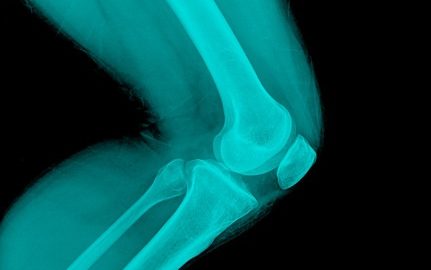Bad Knees? Your Nose Could Help

Arthritis affects millions of people around the world. By the time they are 85 years old, one in two Americans has symptomatic osteoarthritis of the knee. It is estimated that by the year 2040, roughly 78 million Americans will have physician-diagnosed arthritis.
Arthritis is the result of wear-and-tear of the joints. With advancing age, the natural cushioning cartilage between the joints (articular cartilage) is lost, leading to pain, stiffness, and swelling from the bones rubbing against each other. The knee is the most frequently affected site. Symptoms of osteoarthritis typically emerge by the mid-40s. Women are more likely to suffer from osteoarthritis than men.
Background
Articular (joint) cartilage does not have a good capacity to repair and regenerate. The progressive damage to the joints, therefore, cannot be repaired with therapies that involve implantation of chondrocytes (cartilage cells) of articular origin. Chondrocytes from the nasal septum are superior to articular chondrocytes and have a better capacity to regenerate hyaline-like tissue. Nasal chondrocytes are also more adaptable to a new environment. A study published in The Lancet examined whether cartilage grafts engineered from autologous nasal chondrocytes can successfully restore defects in knee cartilage.
Method
Scientists at the University Hospital in Basel, Switzerland, conducted a trial on 10 patients who had large, symptomatic, full-thickness, post-traumatic cartilaginous defects in the knees. Chondrocytes were sourced from the patient’s own nasal septum. These chondrocytes were then cultured on an extracellular matrix and engineered into a cartilage graft. The graft was implanted on the femoral defect and the patient was assessed 24 months later. The feasibility, safety, and efficiency of the procedure were measured. In addition, the outcome in terms of self-assessed clinical symptomatology and radiological evidence of defect filling was evaluated.
Findings
The researchers were able to produce cartilage grafts from the nasal chondrocytes of each patient. The engineered tissue was found to be stable. Once implanted in the injured joint, no adverse reactions were noted. Each patient reported substantial improvement in pain, joint function, and quality of life following the procedure. MRI assessment showed the repair tissue had filled the defect to variable degrees and was similar in composition to native cartilage.
Conclusion
Autologous nasal chondrocytes can be used to engineer hyaline-like cartilage for the repair of cartilaginous defects in the knee. Large controlled trials are needed to assess the efficacy of the procedure and investigate its usefulness in other joints.
References:
- http://www.thelancet.com/journals/lancet/article/PIIS0140-6736(16)31658-0/abstract


